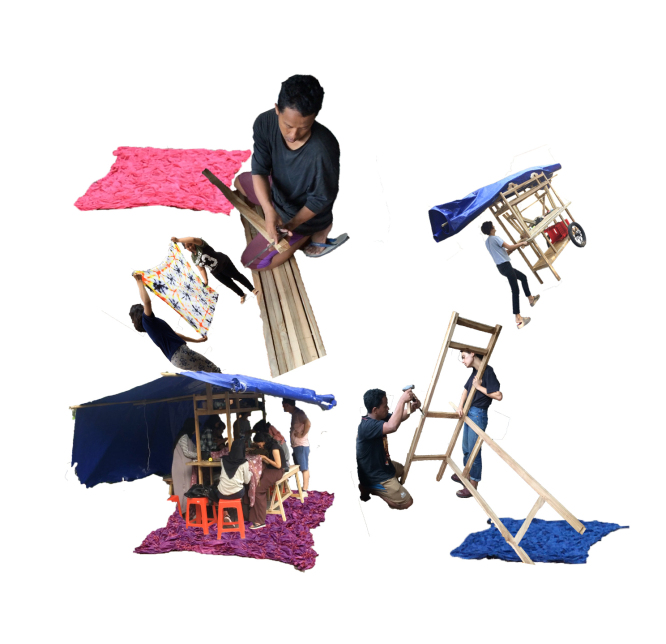The economic system shapes our daily lives. We see that whether we work directly for money or indirectly through reproduction work, for instance, we are part of a bigger whole.
We believe that the values of the economic system that are based on hierarchies, competition, efficiency, and profit maximization, translate directly into the social spaces people inhabit. In these spaces, we produce our identities. It becomes common sense to perform and maintain these individualist values, leaving aside the needs and wishes of those in- and outside each individual’s community.

In Yogyakarta, we see a sense of community like we have never seen it before.
We ask ourselves: Do work and unemployment, social inclusion and exclusion, and the mechanisms of value and identity creation work different here? Does the strong sense of community offer an alternative to the inherent exclusion that is inscribed in the economic system? Or does collectivity here merely help maintain a special variation of this system? How does work produce identities in Yogyakarta? How do communities produce individual identities? Are the sense of community and individualism in conflict with each other? To start out, we tried to get to know people in their workplaces. We spent a week in a commercial batik studio, working with a group of young, recently graduated women.
The second job was at a family-run wood workshop, where we helped building an angkringan (food cart). Ankringan are very present in the public space in Yogyakarta. In a city that has almost no planned public space, the carts form transitional bubbles in which people get together and exchange over snacks and sweet tea. At Jagongan Archipel, the Ankringan Das Archipel built, there was nothing to sell. It merely refers to the socia function of an Ankringan, as a place to exchange and to produce together.
 We parked our angkringan in public spaces across the city, inviting specific groups – from the young women working at the batik studio, to union workers and debt collectors to a group running an informal school – , as well as people hanging out in these public spaces to join a conversation. Here, we discussed issues around labour, resistance, future utopias and collective values.
We parked our angkringan in public spaces across the city, inviting specific groups – from the young women working at the batik studio, to union workers and debt collectors to a group running an informal school – , as well as people hanging out in these public spaces to join a conversation. Here, we discussed issues around labour, resistance, future utopias and collective values.Starting to question our personal way of working together, we want to imagine alternative modes and objectives of production. We tried to create images together that contain existing traces of a potential future – a future we want to live in.
The Practice of Das Archipel collective
A letter to Goethe-Institut Jakarta
“Das Archipel collective works on critical spacial practice since 2013. The work is site-specific. For every of Das Archipels projects they develop a different methodology to create a mental and physical social space together with residents. During the collective working process, place and community correspond. The vision of a community is negotiated, tested and lived in the process of production. They aim to create social spaces and envision alternatives to current structures of control collectively. They see themselves as co-creators, and aim to trigger this vision through conversations, group discussions, and the hands-on practice. An important part of their practice is the focus on social structures within the working group. They aim to be aware of power dynamics that arise also due to the fact that they come as outsiders into a neighbourhood. The reflection and questioning of power structures starts at the hands-on working process and the one to one relations that are built with it. They aim to understand the working group as an open collective that creates a new vision of solidarity, from which they then project to a larger societal scale. They envision a form of solidarity that embraces the multitude: it is centred on difference rather than unity. They cannot project aims or results of their work, but they name pillars of there process as followed: “We try to understand the socio-economic structure of a place. We talk to people, ask questions, invite for dinners or get invited. Together with Locals we try to formulate wishes for their community and gather ideas on how to use an available space. Together we try to realize this ideas. Thereby a place is made. As initiators we want to become irrelevant for that place. We question our role as artists our practice and the discourse surrounding it in a critical manner. We try to stretch the boundaries of our practice and aim for bold and critically emancipatory standing of art that is grounded in local social and political challenges.””
